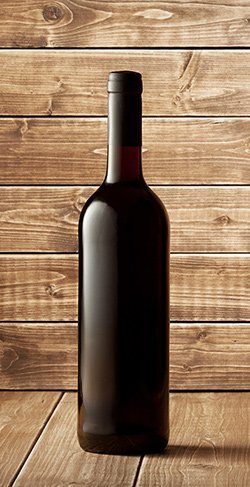Knowing which wine to drink with which food isn’t that easy – unless you’re an expert in the field. Nowadays, our supermarkets and independent wine merchants have such a wide and varied range available from all over the world, that you can easily find yourself staring at row upon row of wine bottles and having no idea which one to pick.
 Wine pairing is a contentious topic simply because selecting a suitable wine to go with your meal is more of an art than a hard science. For that reason, opinions can differ greatly. Nevertheless, there a few simple rules you can follow that act as a basic framework upon which you can build and develop according to your own taste.
Wine pairing is a contentious topic simply because selecting a suitable wine to go with your meal is more of an art than a hard science. For that reason, opinions can differ greatly. Nevertheless, there a few simple rules you can follow that act as a basic framework upon which you can build and develop according to your own taste.
First and foremost, it’s important to drink the wines that you like. Sounds obvious, but once you’ve tasted a few wines; you’ll get to know which you like and from what region. Some people favour French and European wines, while others prefer those from the New World, such as Australia, South Africa and the Americas. Whichever it is, stick with what you know you like when pairing wine with food.
When you’re looking to match a wine with a particular dish, it’s good to consider a few things first: Is the dish mild or is it spicy or rich in flavour? Spicy food needs a wine with a higher sugar content to balance things out. Try a German Riesling, which has a touch of sweetness. If your dish is mild and creamy, you’ll want to avoid an acidic wine, which will clash with it, and go for something smooth and oaky like a rich Chardonnay.
If your dish does have an acidic edge to it, i.e. there’s a squeeze of lemon over the top or lemon in the sauce, then you’ll do well to remember the wine rule that acid needs acid. Sauvignon Blanc, Albarino and Vermentino are made in stainless steel barrels, rather than oak barrels, so have a bright and citrus acidity that will keep up with and heighten the acidity of your dish.
An earthy dish (like mushrooms) or a dish containing rich red meat goes well with a red wine. With lighter meats like pork or chicken, pair the wine with the sauce, rather than the meat. Chicken in a zingy lemon sauce, for example, will require something acidic (see above) while chicken in a creamy leek and pine nut sauce suggests something like a Chardonnay.
When in doubt, read and ask questions. Thankfully the labels on many wines often make pairing suggestions, as do supermarket information cards that can be found near or on the wine display shelves. Your local friendly wine merchant will also be happy to share his or her knowledge with you and assist you in making the perfect choice.
We’ve put together a wine pairing chart, which is by no means comprehensive, but may go a little way to guiding you in your wine beverage selection.
Beef Sauvignon, Merlot, Malbec, red Bordeaux, Shiraz
Pork Beaujolais, Sauvignon Blanc, Unoaked Chardonnay
Lamb Red Bordeaux, Cabernet Sauvignon, Malbec
Chicken Chardonnay, Red or White Burgundy
Fish Sauvignon Blanc, Chardonnay, Pinot Grigio
Seafood Chardonnay, Sauvignon Blanc, Champagne
Vegetarian Chardonnay, Chablis, Sauvignon Blanc
Tomatoes Rioja, Beaujolais, Chianti
Cheese Sauternes, Port, Chardonnay, Pinot Noir
Chocolate Muscat, Asti Spumanti, Port, Madeira

